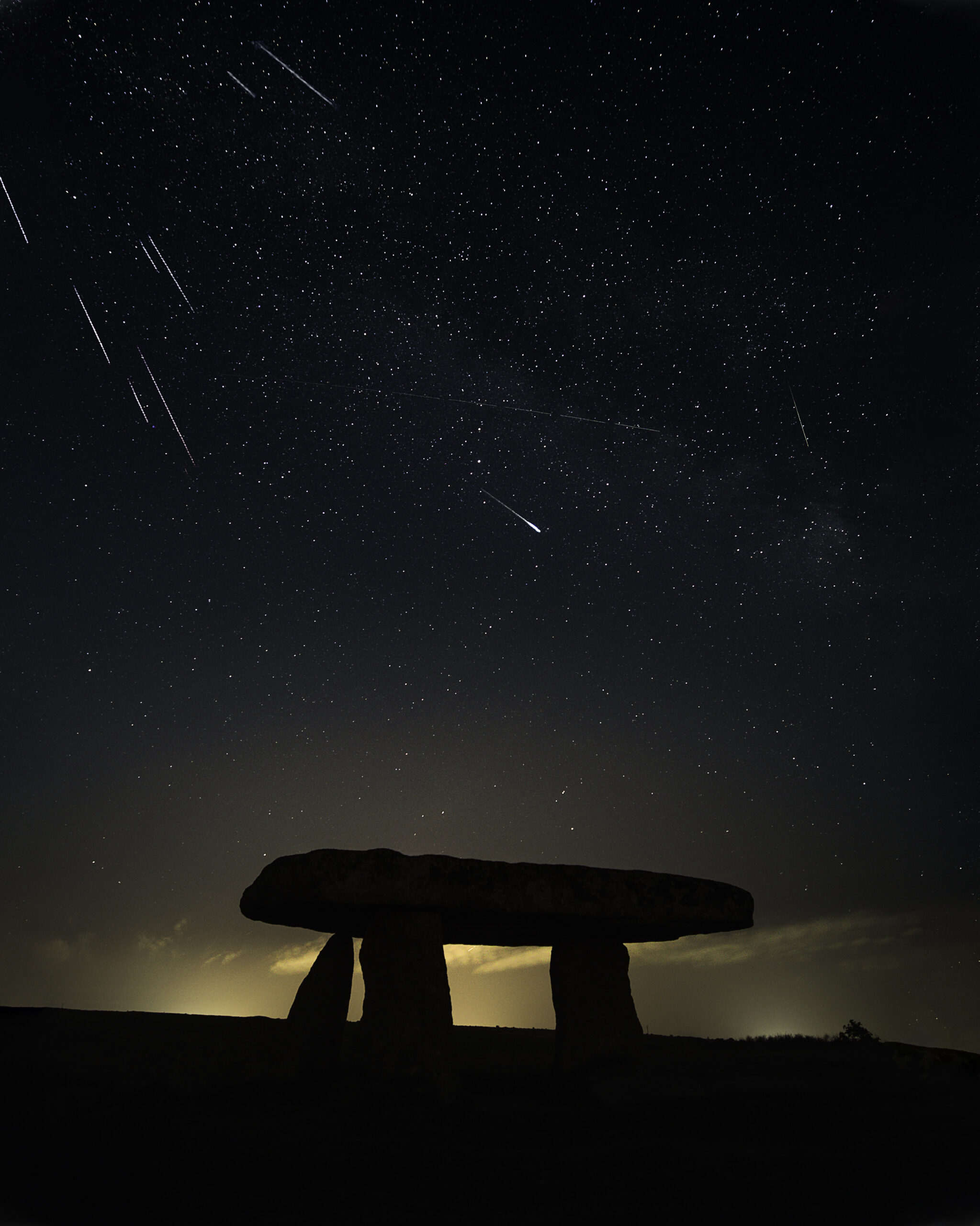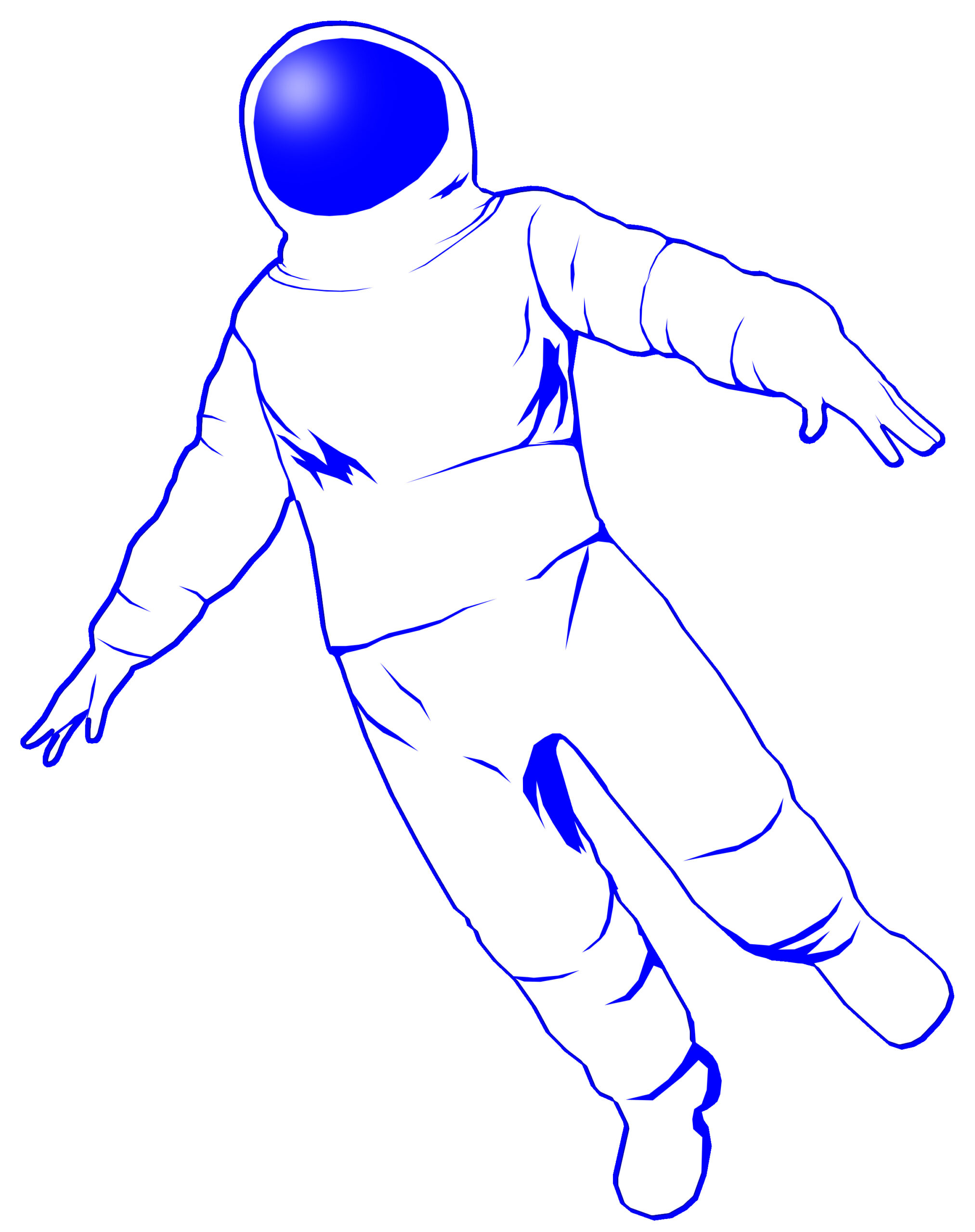Falling stars during the April Lyrids 2020, Adobe Stock, by Ingo Bartussek
Spring Sky Watch
Lyrid Meteor Showers
The Lyrid Meteor Shower is one of the most reliable annual shooting stars streams, known for occasional fireballs and the possibility of surprise surges. The Lyrid shower began on April 15, with peak view time coming tonight into tomorrow morning.
Unfortunately, this year’s peak activity is just two days before the Full Moon, which will make it more difficult to see meteors in the bright moonlight. But don’t let that hold you back. You may still get a good show, weather permitting in your area.

Lyrid Meteor Shower over Lanyon Quoit, Cornwall, iStock Photo, by Ashley Hampson
History
Humans have been watching this meteor shower annually since before the birth of Christ. The oldest record we have of a Lyrid sighting originated in China thousands of years ago.
What we see burning in the sky during Lyrid showers is space debris left behind by Comet Thatcher, discovered in 1861 by an amateur astronomer named A. E. Thatcher. While the debris remains in the path of the Thatcher’s orbit, the comet won’t be back near Earth for another two hundred and fifty years.
More Information
A Meteor (a.k.a. a shooting star) is a piece of space debris that becomes so hot that it glows from friction as it enters the atmosphere. When Earth passes through a field of cosmic debris in her orbit around the sun, we experience a Meteor Shower. Every year there are dozens of meteor showers visible from the Earth’s surface. Each event has its own unique statistics…
Event Statistics
Conditions: Poor. This year’s peak is 2 days from Full Moon
Duration: April 15 to April 29
Peak: Late evening April 21 to early morning April 22
Parent: Debris from Comet C/1861 G1 (Thatcher)
Radiant: Above northeast horizon near the Lyra constellation
Rate: 10 to 20 meteors per hour in ideal conditions.
Surges: Uncommon but surges possible to 100 per hour
Luminosity: Medium brightness
Fireballs: Occasional fireballs occur
Trains: Not significant for this event
Velocity: 29 miles per second

How to Watch
View from a dark location away from light pollution from cities, houses, and streets.
For the best viewing experience, find a position where you can view the entire area of the sky around the radiant point (the spot where the meteors appear to emanate from).
For the Lyrids, look to the northern constellation Lyra.

Astro Poe
April nights are still chilly, so dress accordingly. A chair and blanket may make viewing more comfortable. Warm tea and/or hot cocoa and some snacks can take a sky watch to the next level.

Get into position twenty minutes before your planned view time to allow your eyes to adjust to the night sky.
Meteor showers are best watched with your naked eyes.
Binoculars and telescopes limit your field of view and make it difficult to spot meteors outside of the view through magnifying lenses.
Enjoy the 2024 Lyrid Meteor Shower!
– – –

Bringing you breaking news and informative media with local, regional, national, and world news coverage. Topics include nature, industry, manufacturing, and all things related to the environment.

The night sky is forever changing with the Earth’s daily rotation and annual orbit around the sun. Every time you glance up at the stars you get a different view of the cosmos, like a living work of art.


